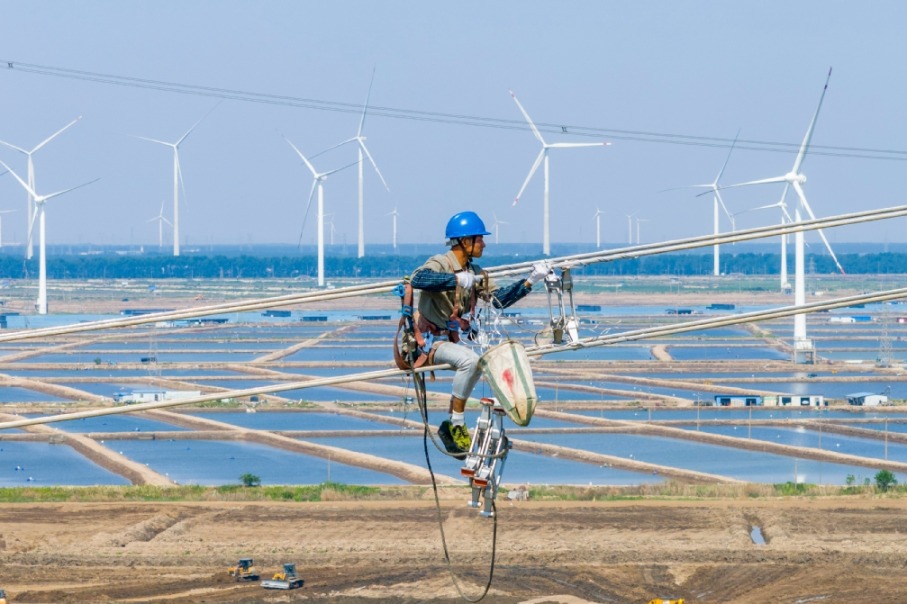Decoding what 'steady and prudent' mean

The overall tone of the annual Central Economic Working Conference from Dec 10-12 largely followed the same tone of the Political Bureau of the Communist Party of China (CPC) Central Committee held earlier this month. It was made very clear that maintaining price stability was a policy priority.
However, the wording on controlling inflation was not quite as aggressive as it was in the announcement following the 2007 conference when inflation was close to 2 percentage points higher than it is now.
Perhaps this reflects the fact that senior policymakers are still concerned about the potential of over-tightening as was the case in 2008, and also by the fact that food prices have recently fallen as the result of the government measures.
In terms of the official policy stance, the Dec 3 Politburo meeting already changed the monetary policy stance to "steady / prudent" from "appropriately / modestly loose" and kept a "proactive" fiscal policy stance.
Note that "prudent" was the word used to describe monetary policy for all the years between 1998 and 2007, a period, which saw many significant changes in the actual implementation of monetary policy.
Likewise, the "appropriately loose" policy stance adopted between 2008 and 2010 actually covered vastly different monetary policy stances.
So the words used in the announcement give little information in terms of the actual policy implementations in the coming months.
Another way to look at this announcement is that a full-scale tightening in monetary policy has already started before the official policy tone was changed.
Under this scenario, the change of tone was just an official confirmation of the actual policy actions.
A comparable case can be made when the government started a very aggressive and broad-based policy stimulus in November 2008 and only changed its official policy stance to "modestly loose" a month later.
The 2008 announcement also stated the government would further improve the exchange rate setting mechanism, keeping the exchange rate mostly stable around its equilibrium level.
The overall macroeconomic policy stance in the 2008 announcement also listed several key areas needing attention:
First, developing a modern agricultural sector, especially using measures to increase farm production.
Second, making faster structural adjustments to the economy, especially encouraging private consumption growth and developing new industries.
Third, improving the public service system, especially in education, health, social security and public housing.
Fourth, deepening structural reforms in the economy, especially in reforming the income distribution system to prevent the income gap from widening even further and to raise the share of direct financing for companies.
And finally, continue to implement the open-door policy and explore more international economic cooperation opportunities.
This policy was designed to raise the level of openness of the economy; attract more FDI and at the same time, inject more FDI abroad; open up the financial sector, and raise the level of imports to utilize its important role in balancing the economy.
While not dismissing these points, readers should be aware that actual policy implementation may be a different story.
For example, last year's conference put a lot of emphasis on the relaxation of the family registration system (hukou), reforming of monopolized industries, and implementing more stricter controls on investment projects.
However, there has been rather limited progress in achieving the first two goals (with the exception of a few regions, such as Chongqing in terms of hukou reform) and the latter was at least partially relaxed this year. The meaning of "strictly" is always up to interpretation.
On the other hand, despite the lack of any mention of the exchange rate, which led many to believe the government had no intention to move on the currency, a move was made in mid-2010.
The authors are researchers at Goldman Sachs Gaohua Economics Research.
Today's Top News
- Xi calls for upholding of ethnic unity
- Abuse of 'security' stifles innovation, collaboration
- Beijing warns countries against signing trade deals with US that hurt Chinese interests
- AI shouldn't undermine humanity's progress
- Xi urges villagers in Xizang to uphold ethnic solidarity
- Digital tax sparks breakdown in US-Canada trade talks






























